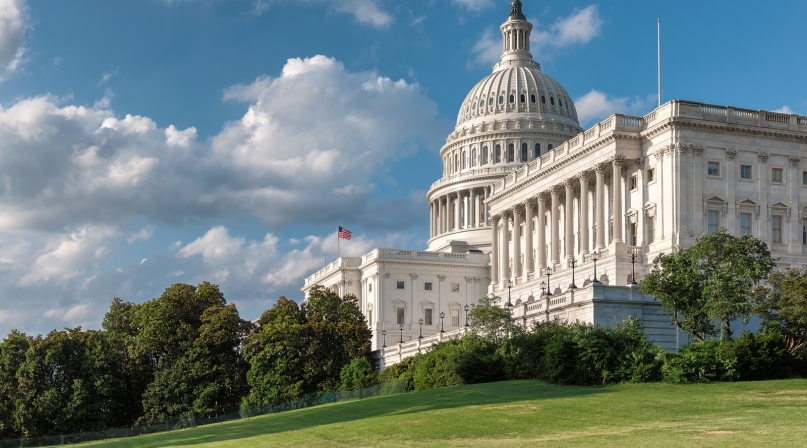Will a divided 116th Congress work on bipartisan priorities important to nation’s counties?
Upcoming Events
Related News

Key Takeaways
Four years of bicameral Republican control of Congress will end in January after Democrats secured a majority in the U.S. House of Representatives in the 2018 midterm elections.
On some issues — including several key county issues — alignment of the parties’ priorities could result in bipartisan agreement on major pieces of legislation.
Learn More
The day after the election, Senate Majority Leader Mitch McConnell (R-Ky.) expressed willingness to work with Democratic House leadership on a new infrastructure package, which President Trump has cited as a priority throughout his administration.
Several other legislative packages important to counties could become bipartisan priorities in the next Congress if they are not first addressed in the final “lame duck” weeks of the current session, including an overdue reauthorization of the farm bill and potential movement on a major criminal justice reform bill.
Whether or not the election results Nov. 6 are considered a “blue wave,” Democratic momentum heading into the elections failed to prevent Republicans from maintaining and strengthening their majority in the U.S. Senate, setting up a divided 116th Congress that could be marked by partisan contention and gridlock.
Heading into the midterm elections, two factors seemed likely to influence the outcome in Congress: the historical improbability of the president’s party maintaining control in the House, and a particularly challenging set of races for Democrats in the Senate. With most races settled, each of these factors has played out as predicted.
Republicans lost at least 30 seats in the House, skewing closely to the average loss of 25 seats for the president’s party in midterm elections since World War II.
Democrats, meanwhile, were felled in the Senate by an election map that called for the party to defend 26 of 33 contested seats, including blue seats in five states that President Trump won by at least 18 points in 2016.
The end result is a divided 116th Congress in which both parties could struggle to advance their legislative priorities.
In the House, the impact of the Democrats’ victory will be tempered by the party’s relatively slim majority in the chamber and, more importantly, continued Republican control of the White House and Senate.
In the upper chamber, a likely two-seat gain will increase the GOP’s margin for internal dissent in confirmations of federal judges and cabinet officials, but the party is still several votes short of a filibuster-proof majority.
In races for governorships and state legislatures throughout the country, meanwhile, Democrats made considerable gains, chipping away at significant majorities built by Republicans over the last several years.
Outside the nation’s capital, 36 states held gubernatorial races in the 2018 midterm elections.
Democratic candidates fared well in these races, managing to flip seven governorships previously held by Republicans: Illinois, Kansas, Maine, Michigan, Nevada, New Mexico and Wisconsin. Despite this sizeable shift, the GOP will retain control of a majority of governors’ mansions across the country, thanks to its 33-governorship majority heading into the midterm elections and pickup of a formerly Independent seat in Alaska, leaving the party in control of 27 states heading into 2019.
Democratic momentum in the midterm elections carried over to state legislatures, where Democrats flipped a total of six legislative chambers in five states: Colorado’s Senate, Maine’s Senate, Minnesota’s House, New Hampshire’s House and Senate and New York’s Senate.
The House in Alaska, on the other hand, switched from Democratic to Republican hands.
Overall, Democrats reduced the Republican control of state legislative chambers from 67 heading into the midterm elections to a still-significant 62 heading into 2019.

Attachments
Related News

County Countdown – Dec. 15, 2025
Every other week, NACo's County Countdown reviews top federal policy advocacy items with an eye towards counties and the intergovernmental partnership.

County Countdown – Dec. 1, 2025
Every other week, NACo's County Countdown reviews top federal policy advocacy items with an eye towards counties and the intergovernmental partnership.

Counties Celebrate Key Permitting Inclusions in SPEED Act
NACo issued the following statement in response to the passage of the Standardizing Permitting and Expediting Economic Development (SPEED) Act (H.R. 4776), which advanced out of the U.S. House Committee on Natural Resources on November 20.